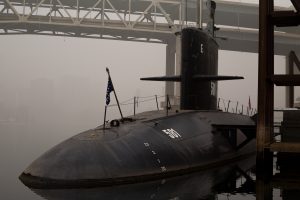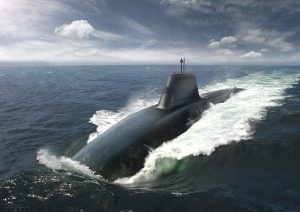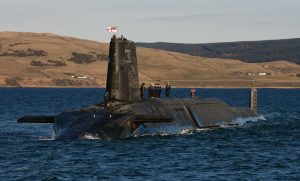The Maximum Diving Depth of Submarines
Understanding Submarines
Submarines feature a double hull construction, with the outer hull made of steel and the inner hull typically crafted from a lighter metal like aluminum. This design helps withstand the immense pressure of deep waters. They have unique design and construction features that enable them to withstand the immense pressure of the ocean depths. The buoyancy and pressure control mechanisms of submarines are also crucial in determining how deep they can go.
Design and Construction
Submarines are built with a double hull made of steel and a lighter metal like aluminum. This double hull structure provides extra protection against the pressure. The cylindrical shape of submarines helps distribute the pressure evenly across the hull, and it is reinforced with ribs and other structural supports to provide additional strength.
Buoyancy and Pressure Control
Submarines use ballast tanks and diving planes to control their buoyancy and depth. Ballast tanks adjust the weight of the submarine by filling them with water or emptying them. This affects the submarine’s buoyancy, causing it to sink or rise. Diving planes, which are large flat surfaces attached to the hull, control the pitch and depth of the submarine by adjusting their angle.
Depth Limitations
The depth at which a submarine can operate is limited by physical constraints and technological limitations. The physical constraints include the pressure of the water and the strength of the submarine’s hull and seals. Technological limitations involve communication, navigation, and oxygen supply as a submarine dives deeper.
Physical Constraints
Water pressure increases rapidly as a submarine descends. The submarine’s hull must be strong enough to withstand this pressure and prevent leaks. The pressure at any given depth can be calculated using a formula that takes into account water density, gravity, and depth. The depth at which a submarine can operate depends on the strength of its hull and the integrity of its seals.
Technological Limitations
As submarines dive deeper, communication becomes more challenging due to limitations of sonar and radar technologies. Advanced technologies are needed for navigation, detection of other vessels, and maintaining oxygen supply as pressure increases. Oxygen supply must be replenished more frequently at greater depths, limiting the amount of time a submarine can spend underwater.
Record Depths and Submarine Classes
Military submarines have impressive diving capabilities. The Russian Navy’s Project 941 Akula class submarine, also known as the Typhoon class, holds the record for the deepest diving submarine, reaching depths of up to 4000ft (1220m). The US Navy’s Los Angeles class submarines can dive up to 650m (2133ft), and the UK’s Vanguard class submarines can dive up to 300m (984ft). However, the maximum depth of a submarine is classified information and varies based on its class and design.
Research Submarines
Research submarines are used for scientific exploration of the ocean depths. The Shinkai 6500, operated by the Japan Agency for Marine-Earth Science and Technology (JAMSTEC), is the deepest diving research submarine, reaching depths of up to 6,500m (21,325ft). Other notable research submarines include the Alvin and the DSV Limiting Factor, which can dive up to 4,500m (14,764ft) and 10,928m (35,853ft) respectively.
Impacts of Submersion Depth
Human Factors
Submersion depth affects the crew’s physical and psychological well-being. Increased pressure at greater depths can cause health issues such as decompression sickness, nitrogen narcosis, and oxygen toxicity. Proper crew training and optimized submarine design are essential for deep-sea operations.
Environmental Factors
Submersion depth impacts marine life and the ocean’s physical properties. High pressure at great depths can make it difficult for marine life to survive. Submarine equipment can cause noise pollution, disrupting ecosystems. Cold temperatures and lack of sunlight affect the ocean’s physical properties, posing challenges for maintaining equipment and communication systems.
Future of Deep Sea Exploration
Technological Advancements
New technologies enable exploration into deeper parts of the ocean. The Chinese submersible Fendouzhe set a record by reaching a depth of 10,909 meters (35,790 feet). Remotely operated and autonomous underwater vehicles contribute to data collection from the ocean floor, and advancements in AI enhance their navigation capabilities.
Uncharted Territories
Despite technological advancements, much of the deep ocean remains unexplored. The Mariana Trench, the deepest part of the ocean, is one of the significant uncharted territories. More research and development are needed to explore these territories and uncover new species, geological formations, and resources.
Frequently Asked Questions
What’s the deepest depth a submarine has gone?
The deepest depth a submarine has gone is 10,925 meters (35,843 feet) by the Deepsea Challenger in 2012.
How deep can U.S. Navy submarines go?
U.S. Navy submarines can dive to depths greater than 800 feet (244 meters), but the exact depth depends on the submarine class.
Can a submarine reach the Titanic?
Yes, submarines can reach the Titanic wreck site, and several manned submersibles have visited it.
How deep did the Titanic submarine go?
The Titanic submarine, also known as the Nautile, reached a depth of 3,800 meters (12,500 feet).
What happens to a submarine at crush depth?
At crush depth, the submarine’s hull can collapse due to the external pressure exceeding the internal pressure. Submarines are designed to withstand the pressure at their maximum operating depth, which is shallower than crush depth.
How fast can a submarine go?
Most submarines can travel at speeds of 20 to 30 knots (23 to 35 miles per hour) while submerged.






